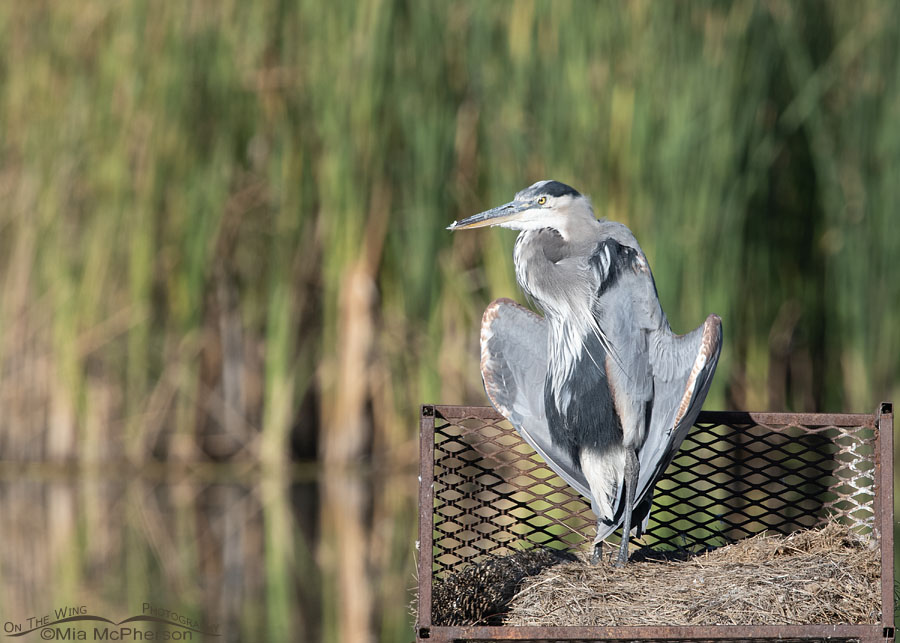Earlier this week, I found this adult Great Blue Heron in a Flasher pose while resting on a human-made nest in a pond at Farmington Bay WMA in northern Utah.
 Fall Great Blue Heron Flasher pose at Farmington Bay WMA – Nikon D500, f8, 1/1000, ISO 500, Nikkor 500mm VR with 1.4x TC, natural light
Fall Great Blue Heron Flasher pose at Farmington Bay WMA – Nikon D500, f8, 1/1000, ISO 500, Nikkor 500mm VR with 1.4x TC, natural light
It was challenging, but I attempted to control my laughter while I photographed the large wading bird in this flasher pose. The fact that the heron ‘looked’ grumpy didn’t help, so I laughed out loud briefly and then focused on taking images of the bird.
The ‘flasher’ pose in birds is more about thermoregulation than laughter. Great Blue Herons and some other wading birds strike this pose to warm themselves up on cool days or to beat the heat on hot days.
It was chilly the morning I photographed this heron, so the bird most likely adopted this pose to warm up after a cool fall night on the marsh. This spread-wing posture is believed to help the birds increase the absorption of solar energy when the sun is rising.
When the temperatures have been high, I’ve also seen herons and other birds in this flasher pose with their bills open. During high heat I also notice gular fluttering along with this posture in some wading birds.
Gular fluttering is a behavior that birds use to cool off when the air temperature is high since they lack the ability to sweat. Gular fluttering involves rapid movement of the muscles in the bird’s throat, which helps to increase the flow of air over the moist surfaces of the mouth and throat, promoting evaporative cooling.
Combined with gular fluttering, the flasher pose, or spread-wing posture, can increase the airflow around the bird’s body, which both promote evaporative cooling.
And now you know…the rest of the story. (Thanks to Paul Harvey.)
Life is good.
Mia
Click here to see more of my Great Blue Heron photos plus facts and information about this species.


That could get him arrested in NYC but maybe not in LA and definitely not in SF. Great pic. Thanks Mia.
That made me laugh! I couldn’t imagine what you meant by a “flasher pose” but the minute I saw it, well, “that was cute”, is all I can say.
Love it – and hope that the bird warmed quickly.
Nice photo! I love it when you can catch them in the flasher pose, it always makes me laugh.
I have a photo of one like this too and wondered why in the world it was posing in such an odd way! Thanks for the information Mia!
Great shot and thanks for your explanations re: temperature regulation. Very helpful.-Jeri S.-Jeri